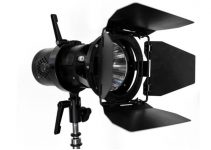DaVinci Resolve has been moving by leap and bounds with a multitude of new capabilities added over time. It started out as a pure color grading software and then it slowly transformed into a complete post-production suite, expanding from editing and grading to compositing in Fusion and audio mixing in Fairlight as part of an all-in-one creative solution.
This whole metamorphosis happened relatively quickly. That’s why many folks who are just starting out struggle to find some of the available options or don’t know whether they even exist in the first place.
Self-teaching can be a way to learn, but it’s always better to accept the experience and help from a seasoned professional like Alex Jordan from LearnColorGrading.com. He will be the host who will lead us to discover a few less known features of Resolve that could make our video editing workflow considerably faster as well as way more efficient down the line.
#1 – Selection and Playhead
On the Edit page, you can open your timeline menu and enable “Selection follows playhead”. This option, just as the name implies, will allow you to change the behavior of the automatic selection inside the timeline.
Now, every time you pause your playback, the clip under the playhead will be selected. That way, you could use the quick selection combined with a keyboard shortcut to delete a specific clip with a single movement.
#2 – Quick Export
The Cut page has been the biggest innovation in Resolve since the integration of Fairlight and Fusion. Extremely useful for filmmakers invested in hectic workflows, its quick export feature is an extremely loved one.
Many would like to have a similar function on the Edit page, but it’s absent for the moment. Luckily, in the File menu, the Quick export option opens the same dialog box.
# 3 – Project Notes
A lesser-known feature in Resolve is the ability to stick notes to your project. Just head to the File menu and pick the “Project Notes” on the list. That will open the window where you can input notes that will stay there for other collaborators to see. Or even for yourself for later.
#4 – Transcoding
Sometimes it does happen that you need to transcode your footage from format A to format B. Adobe offers a neat utility like Media Encoder, and there’s plenty of encoding software, but did you know that there’s a built-in encoder in Resolve as well?
In the File menu, there’s an option called “Media Management. ” In the tab called Clips, you can choose to transcode all the clips in your project to the format of choice.
#5 – Edit History
This is quite self-explanatory. Head to the Edit Menu, under History you’ll see the most recent edits you’ve done so that you can quickly revert to the situation prior to that without having to go with multiple Ctrl+Z.
Take note of the History Window at the end of the menu. This option opens a separate window where you can keep your history at hand’s reach.
#6 – Timeline Duplicate
Sometimes you need to back up the whole timeline, take a snapshot while evaluating an edit but still being able to come back and continue editing. Instead of copying everything and pasting on a new timeline as some do, just use the “Duplicate Current Timeline” function in the Edit menu. The copy will be automatically created and opened for you.
#7 Fade to Playhead
This is a less intuitive feature than the others. Let’s say you’d like to create a fade-in on a selected clip. You could use the fade handle but you have to drag it all the way. Instead, if you have the playhead at the desired out point for the transition, you can just select “Fade in (or out) to playhead” from the Trim menu and you are all set.
#8 – Clean Video Tracks
Often we stack clips on each other while editing, but that is actually a nonsensical human behavior since the software will show only the topmost clip. When editing is finished, you can clean up the timeline by flattening it up, collapsing all onto the first track, unless opacity is involved.
That’s what the “Clean up Video tracks” option is there for in the Trim menu. It can also highlight the unused clips by changing their label or disabling them.
#9 – Ripple Timeline Markers
Let’s say that while editing, you’ve placed a couple of markers to take note of important editing timecode points in your timeline. Now, if you decide to delete a clip between those markers, you’ll see the markers will move to adapt. Just disable the Ripple Timeline Markers option in the Timeline menu to control this function.
#10 – Output Blanking
This feature is very handy when you need to export a video with a specific aspect ratio to make it look more cinematic. Instead of using PNG files or other workarounds, Resolve has the feature built-in. It’s called Output Blanking in the Timeline menu: just choose the right aspect ratio you need.
#11 – Find Timeline
It’s easy to find a specific clip in the media pool, but how about the Timeline you’re working on? No problem. It’s the last option in the Timeline menu: “Find current timeline in media pool”
#12 – Last Position
If you have this option active, what will happen is that upon pause the playhead will turn back to the position it started. It may be of use to some, but unnerving to others. If you’ve toggled it by mistake, you can disable it by right-clicking on the stop button under the program monitor and unticking “Stop and Go To Last Position”.
So, there you have it, twelve less known features in Resolve that you may have missed for some reason. It’s a long list, and none of the options is a game-changer, but it’s the small details that will make your life easier when editing all day long, right?
[source: LearnColorGrading.com]
Disclaimer: As an Amazon Associate partner and participant in B&H and Adorama Affiliate programmes, we earn a small comission from each purchase made through the affiliate links listed above at no additional cost to you.



